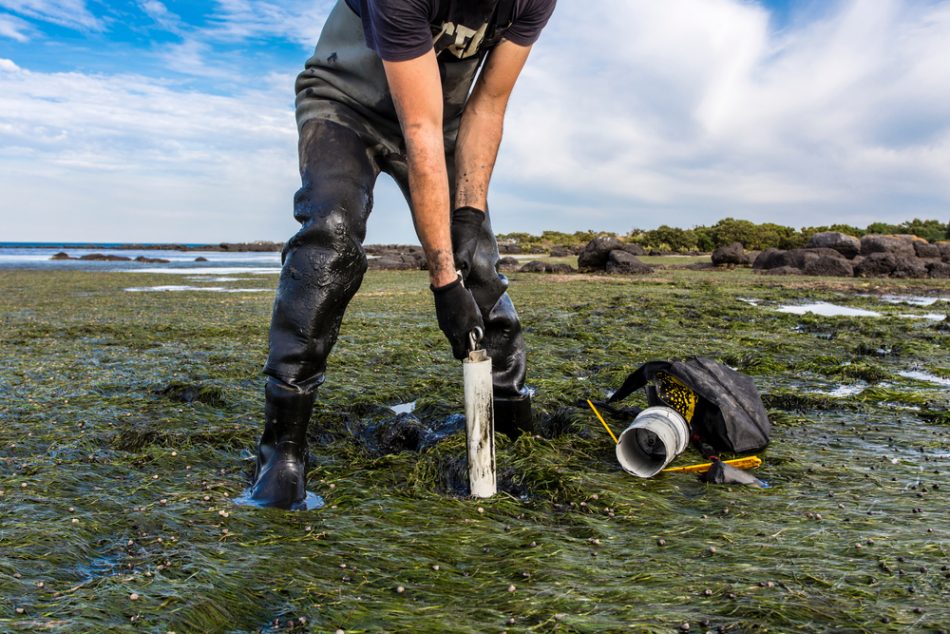From capturing greenhouse gases to removing plastic waste from our oceans, seagrass has proved itself an invaluable ally in our fight against some of today’s most pressing environmental concerns. Now, the underwater plant is making its way into furniture design in a bid to enhance the industry’s sustainability credentials.
The project comes from architect and designer David Thulstrup, whose recent exhibit collection explores eelgrass as a key design element. Called MOMENTUM, the collection is made up of four limited-edition furniture pieces: a low table, a high table, a podium, and a screen. The sea plant was converted into legs for the furniture and screen material made by Danish manufacturer Søuld called Acoustic Mats.
The use of eelgrass as a building material dates back to the 1600s when it was used as a roofing material by people living off of the Danish mainland, where eelgrass was in high supply.
Following about ten years of research and development, Søuld converted that traditional building technique into a modern process. While its Acoustic Mats offer a welcome alternative in the construction industry, MOMENTUM is the first example of using the material in furniture, reports Inhabitat.
“This collaboration has given us the opportunity to explore the material’s possibilities beyond the context of building construction,” explained Søuld’s Co-Founder Pi Fabrin. “[Thulstrup’s] purist material approach also highlights its natural beauty and tactility, and his designs respect the cultural heritage of eelgrass whilst meeting the design and environmental needs of today.”
Next to providing an alternative to less eco-friendly options, the integration of seagrass elements into the furniture design also creates healthier indoor quality — all while promoting a stronger connection between nature and home interior design. What’s more, Søuld’s toxic-free eelgrass products offer thermal and moisture-absorption properties and are highly resistant to fire, mold, and rot.











